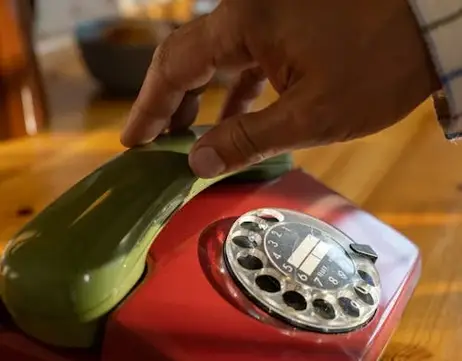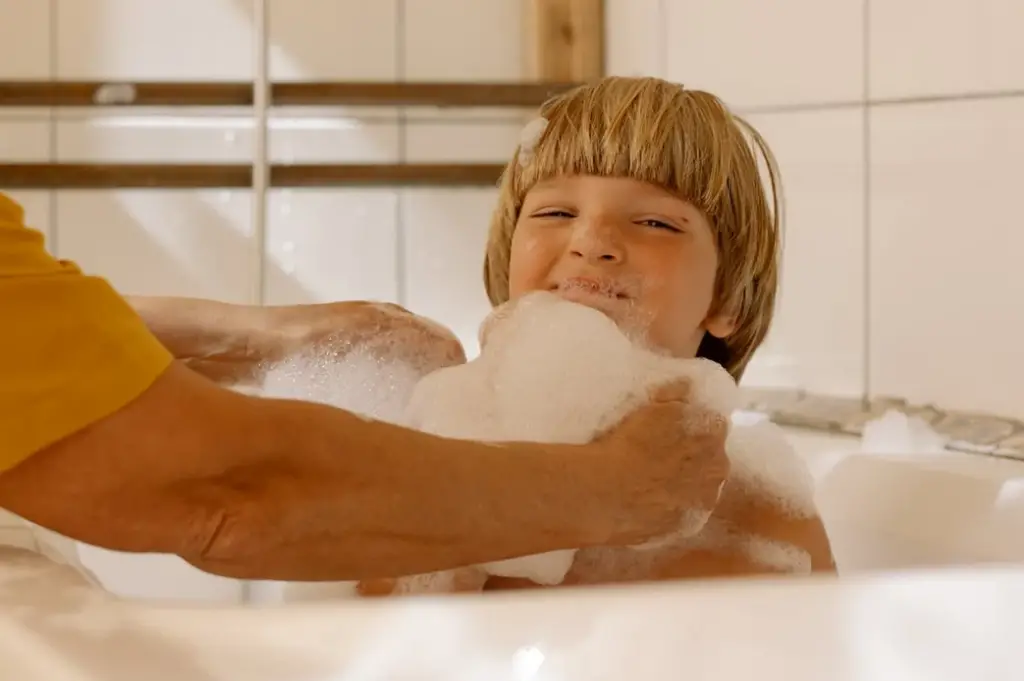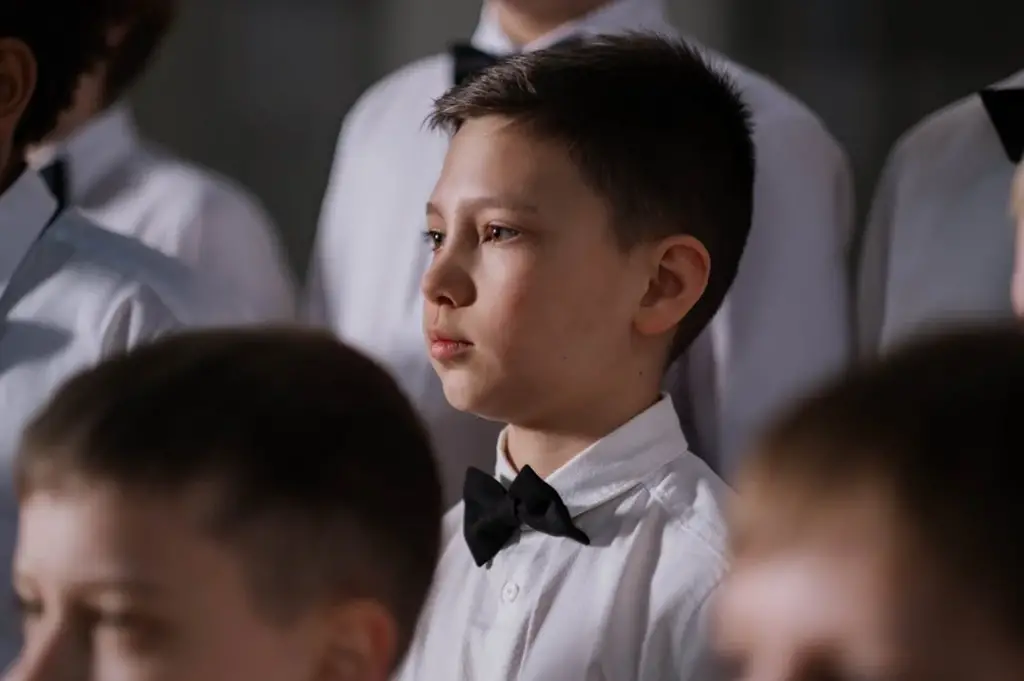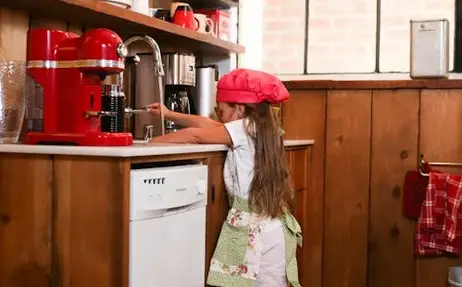Back in the day, parents ran their households like well-oiled machines, and there was no room for questioning the rules. What they said went, and if you dared to ask, “Why?” you’d likely get the classic response: “Because I said so.” Every generation has its quirks, but for baby boomers, house rules often reflected a mix of strict discipline, old-fashioned logic, and a touch of paranoia. Some of these rules made practical sense at the time, but looking back, they seem downright bizarre, especially in today’s world of constant communication and looser parenting styles.
Some of these rules came from safety concerns that weren’t always scientifically sound, while others were about keeping up appearances or enforcing respect in a very particular way. Either way, boomers learned quickly that breaking them meant real consequences—often involving a belt, a bar of soap, or at the very least, an earful. Now, when we tell younger generations about these rules, they look at us like we grew up in another universe. And maybe, in a way, we did. Let’s take a trip down memory lane and revisit some of the most rigid, head-scratching, and occasionally ridiculous household rules we followed without question.
1. Answer the Phone Like You’re the Receptionist of a Fortune 500 Company

If the phone rang, you were expected to pick it up on the second ring—never the first, because that made you seem too eager. And heaven help you if you answered with a simple “Hello” instead of a proper greeting like, “Smith residence, Jimmy speaking!” Parents took phone etiquette very seriously because a phone call was an important event. There was no caller ID, no way to screen calls, and it could be anyone from your dad’s boss to a long-lost relative. You were a representative of the household, and your tone had to be polite, clear, and respectful at all times.
Hanging up without saying goodbye was considered incredibly rude, and if you were caught doing it, you’d get a stern lecture about manners. Some parents even had a rule that kids weren’t allowed to answer the phone at all, just in case it was an adult matter. And if it was a long-distance call? Oh boy, you were expected to keep it brief, because those were expensive! If you got too chatty, you’d hear, “This isn’t a party line!” Today, kids barely use their phones for talking, and the idea of answering a call formally feels straight out of a black-and-white movie.
2. No Talking at the Dinner Table—Unless Spoken To

Mealtime wasn’t just about eating; it was a structured, almost ceremonial event, and there were rules to follow. One of the biggest? Kids didn’t speak unless a parent asked them a question. Dinner was a time for adults to talk about the day, and children were expected to sit quietly, eat what was on their plate, and wait their turn to be acknowledged. Some families even had a “no elbows on the table” rule or a system where kids had to ask permission to be excused when they were finished.
Trying to interject with a funny story or ask for seconds at the wrong time could earn you a sharp look or a swift, “Not now!” Parents saw this as teaching respect and discipline, but today, family dinners are often lively conversations where kids talk freely. Back then, the idea of debating a topic with your parents over a meal was laughable. You ate, you listened, and you hoped the topic didn’t turn to your grades.
3. If You Didn’t Eat It for Dinner, You’d Eat It for Breakfast

Leftovers weren’t a suggestion; they were an obligation. If you didn’t finish your dinner, that same plate would appear in front of you at breakfast, sometimes cold and congealed from a night in the fridge. The logic was simple—wasting food was unacceptable, and if you were hungry enough, you’d eat it. Complaining about the meal would only make things worse, and the idea of being a “picky eater” wasn’t tolerated in most households.
Parents would often say, “There are starving children in China,” as if that somehow made liver and onions more appealing. And no, you couldn’t just push food around your plate and hope no one noticed. Some kids got creative, slipping unwanted bites to the family dog or stuffing peas into their napkins. Today, parents cater to their kids’ food preferences, offering alternative meals or just letting them eat when they’re hungry. But back then, food was a battle, and you were not going to win.
4. Kids Were Expected to Answer the Door, No Matter Who It Was

If someone knocked on the door, it didn’t matter what you were doing—you stopped and answered it. There was no ignoring a visitor, and you certainly didn’t peek through the blinds and pretend you weren’t home. A ringing doorbell was treated with urgency, whether it was a traveling salesman, a neighbor borrowing sugar, or your mom’s bridge club friends arriving unannounced. You were expected to be polite, greet them properly, and, if necessary, take a message or let them inside.
This was before the era of security cameras and suspicious packages, so answering the door wasn’t seen as a potential safety risk. But today, people barely open the door for anyone unless they’re expecting them, and “stranger danger” is drilled into kids from an early age. Back then, it was unthinkable to ignore a visitor, and your parents would demand to know, “Did you let them in?” as if the front door was some sacred portal.
5. Be Home Before the Streetlights Came On—Or Else

This was the universal curfew that every kid understood without question. You could roam the neighborhood all day, riding bikes, playing baseball, or climbing trees, but the second those streetlights flickered on, you’d better be booking it home. There were no GPS trackers, no cell phones to check in with, just the trust that you knew the rule. If you weren’t home on time, you weren’t just in trouble—you were in deep, serious, no-TV-for-a-week trouble.
Some kids tried to squeeze out extra minutes, claiming they didn’t see the lights come on or pretending their watch was slow. But parents always knew, and they weren’t buying it. If you were really late, you might get the dreaded walk of shame as your mom called out for you in the neighborhood. Today, parents track their kids in real-time, but back then, it was all about independence—with strict consequences if you miscalculated your time.
6. No Shoes in the Living Room—Ever

The living room wasn’t just another part of the house; it was sacred ground. This was the room with the nicest furniture, the “good” couch that no one actually sat on, and maybe even a plastic cover over the cushions if your mom was really serious about keeping things pristine. Shoes were strictly forbidden, no matter how clean they looked, because walking in with them was seen as a direct attack on the carpet’s purity. If you forgot and stepped inside with sneakers, you’d hear, “Were you raised in a barn?” before being forced to backtrack and remove them immediately.
Some families even took it a step further, banning kids from the living room altogether unless company was over. You could see it, but you couldn’t touch it—like a museum display in your own home. If guests arrived, kids were suddenly expected to behave like tiny adults, sitting stiffly and speaking only when spoken to. Today, the idea of a “no-go” zone in a family home seems ridiculous. But back then, parents believed that a tidy, undisturbed living room was a mark of respectability, even if it meant no one actually enjoyed it.
7. Bath Night Was a Strictly Scheduled Event

Daily showers? Forget about it. Most kids were lucky if they got two baths a week, and some households had a strict schedule—usually Saturday night to make sure everyone was presentable for church on Sunday. If you were younger, you might have had to share bathwater with a sibling, which meant the unlucky second kid got the lukewarm leftovers. And don’t even think about wasting too much hot water, because that would earn you a stern warning about the gas bill.
Some kids pushed their luck, trying to get away with a splash of water on their face and a little soap behind the ears. But if a parent suspected you skipped your bath, they’d do the dreaded “neck check,” swiping a finger behind your ear or along your wrist to see if you were clean. If you failed, back to the tub you went! Nowadays, kids take multiple showers a day, and nobody would dream of reusing bathwater. But back then, conservation and efficiency ruled, and hygiene was more of a weekly event than a daily routine.
8. Children Were Expected to Address All Adults as Mr. or Mrs.

Calling an adult by their first name was unthinkable—unless they specifically told you otherwise, and even then, you’d probably hesitate. Every grown-up, whether it was your teacher, your neighbor, or your parents’ friends, was “Mr.” or “Mrs.” followed by their last name, no exceptions. If you slipped up and called an adult by just their first name, you’d get a sharp correction, possibly followed by a lecture about respect.
Even if you knew someone well, like a family friend who had been around forever, they were never just “Joe” or “Linda.” Some parents even took it further, requiring kids to address adults with “sir” or “ma’am,” which made every conversation feel like a military exchange. Today, kids are much more casual with adults, and many parents prefer to be on a first-name basis with their children’s friends. But back then, titles mattered, and using them properly was a sign that you had been raised right.
9. You Couldn’t Leave the Table Until Your Plate Was Clean

Dinner wasn’t just about eating—it was about commitment. If your plate was full when you sat down, it had to be empty when you got up, no matter how much you disliked what was in front of you. Kids learned quickly that refusing to eat wasn’t an option. You either finished your meal, or you sat there staring at it for what felt like an eternity while your parents reminded you how “lucky” you were to have food at all.
Some kids developed survival strategies, like shoving vegetables under the mashed potatoes or sneaking food into a napkin. Others were less fortunate and found themselves locked in a battle of wills, stuck at the table long after dinner had ended. The worst part? If you didn’t finish, your plate would be wrapped up and saved for your next meal. Today, parents tend to be more flexible, allowing kids to eat until they’re full rather than forcing every last bite. But back then, wasting food was practically a crime, and the dinner table was a battlefield.
10. If You Slammed a Door, You’d Lose It for a Week

Slamming a door was one of the quickest ways to find yourself in deep trouble. If you were angry and stomped off to your room, punctuating your exit with a loud door slam, you might come back later to find the entire door removed from its hinges. Parents saw door slamming as a sign of disrespect and defiance, and they had no problem taking drastic measures to teach a lesson.
For the next week, maybe longer, you’d have zero privacy. Your room was wide open for everyone to see, and you quickly realized how much you took having a door for granted. Some kids tried to tape up a sheet or create makeshift barriers, but it never worked. Parents always won this battle. Today, taking a kid’s door away seems extreme, but back then, it was a common punishment that sent a clear message—your home, your parents’ rules.
11. Lights Out at a Strictly Enforced Time—No Exceptions

Staying up past bedtime was not an option. If your parents said lights out at 8:30, they meant it, and you were expected to be in bed with the lights off, no ifs, ands, or buts. Some parents even did nightly checks, opening the door to make sure you weren’t reading under the covers with a flashlight. If you were caught, the book or magazine might be confiscated, and you’d hear about it the next morning.
Some kids tried to push their luck by keeping the TV on low volume or sneaking a transistor radio under their pillow, but parents had an almost supernatural ability to detect rule-breaking. If they heard even the faintest sound, you’d be busted. Today, kids are up all hours on phones, tablets, and video games, but back then, bedtime meant bedtime. And if you weren’t tired? Too bad—you just had to stare at the ceiling until you were.
12. Chores Were Non-Negotiable and Unpaid

If you grew up thinking you were going to get an allowance just for existing, think again. Chores weren’t something you got paid for; they were just part of being in a family. Dishes, vacuuming, mowing the lawn, taking out the trash—you were expected to pitch in without complaint. If you dared to ask, “Do I get paid for this?” your parents would laugh in your face.
Some families had chore charts, while others simply expected kids to know what needed to be done. Either way, there was no arguing about it. If you dragged your feet or did a lazy job, you’d be sent back to do it again properly. Today, many parents use allowances as an incentive, but back then, kids learned responsibility the old-fashioned way—by doing the work without expecting a reward.
Parents had their reasons for these rules, whether it was instilling discipline, maintaining order, or simply doing what their own parents had done before them. Some of them still make sense today, while others feel outdated, even comical. But whether you followed them to the letter or found ways to bend the rules, they were a defining part of childhood. And while we may laugh at them now, there’s no denying they shaped us into the people we became. So, what were the rules in your house growing up? Did any of these sound familiar? Let’s hear your stories in the comments!


